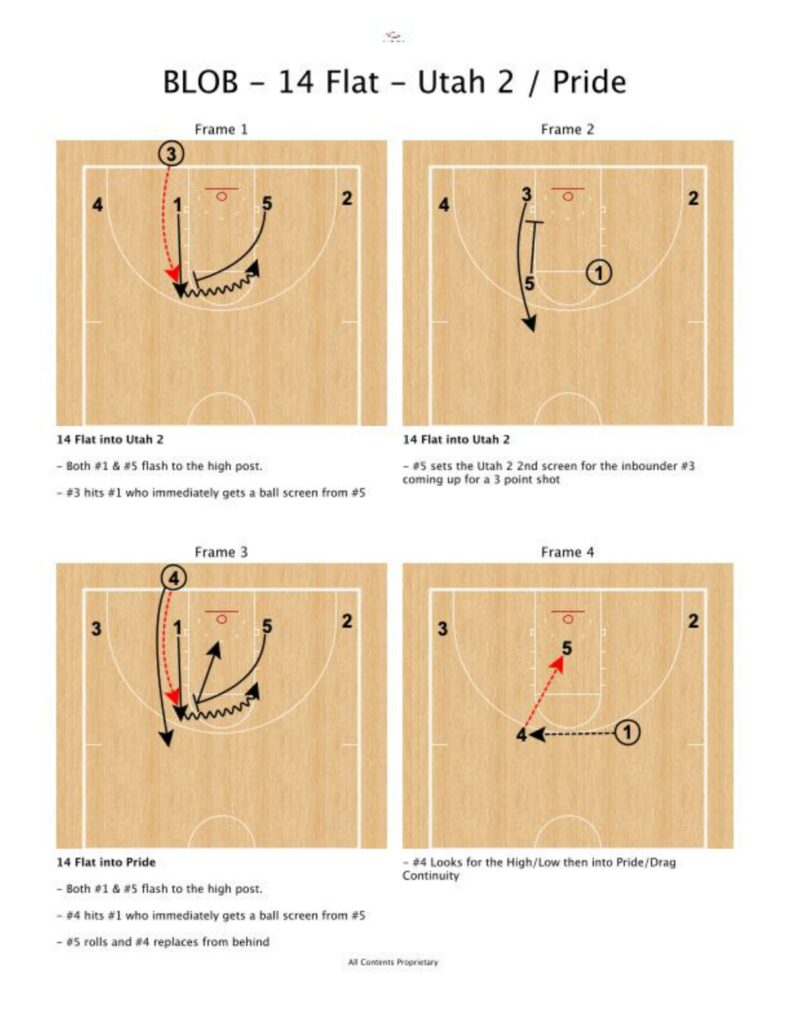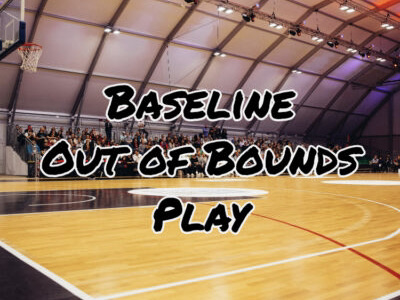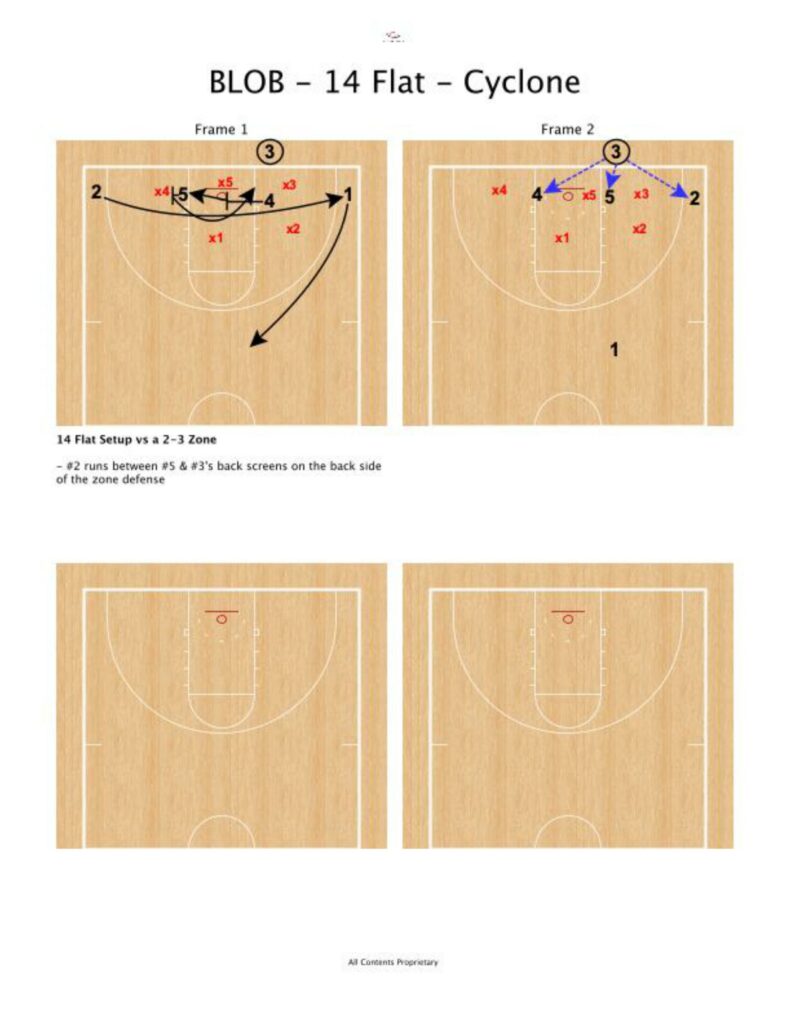No basketball coach’s playbook is ever complete without a go-to baseline out of bounds play. Sometimes referred to as a BLOB, the baseline out of bounds play serves as a scoring opportunity for most teams. These plays are often quick-hitters with multiple options for the inbound passer.
Coaches can be as creative as they want to be when designing these plays, but they have to keep in mind the skill-level of their team. Another consideration is being able to shift directly into the team’s core offense. Finally, some coaches prefer to install baseline out of bounds sets that have multiple variations from which to attack the basket.
Baseline Out of Bounds Play: 14-Flat
14-Flat features the four players on the floor arrayed along the baseline. Players occupy the three-point corners and the two blocks. The inbounder has a clear line of sight along the baseline and plenty of room to make the necessary reads.
The first action in 14-Flat involves 1 popping from the box to the elbow. As that pass is happening, 5 moves from the opposite block into a ball screen at the elbow. 1 attacks onto the key, with 2 waiting for a kick in the strong-side corner. After setting the initial ball screen, 5 turns and drops into a down-screen for the inbounder. 1 attacks the basket at that point with multiple options, including a layup, corner kick out, back pass and more.
This play should be run against a man-to-man defense.
Baseline Out of Bounds Play: 14-Flat – Cyclone
This play is used against a zone defense. For Cyclone, the offense still uses the 14-Flat alignment, with players arrayed along the baseline. This time 1 starts in the strong-side corner and flashes to the top of the key. From there, 2, which started in the opposite corner, cuts across using two screens at the block. Once 2 has cleared both screens, 4 turns and sets another screen, this time across the key. 5 curls toward the inbounder and 4 seals his man, leaving the inbounder with multiple reads.
The key to this play remains the inbounder’s ability to read the progression correctly and make a good interior pass. 1’s cut is a decoy, as is 2’s to the corner. 5’s curl may result in a layup, but the most likely basket often comes on 4’s seal against the backend of the zone. The inbounder must direct the defense away from that action, focusing on the corner with a ball fake. From there, it’s a matter of getting a good feed into the post.
A key consideration for any baseline out of bounds play is the ability to flow into a team’s offensive continuity. Depending upon a team’s base offense, the most effective BLOBs allow the offense to attack quickly. But if a defense covers up the initial actions, the BLOB flows into the normal offense or a specific half court play.
RELATED: Basketball Shooting Drills
Resources:

If you found this useful, don’t forget to check out additional blog posts at TeachHoops.com. Also, check out TeachHoops on Facebook, Twitter, Instagram and YouTube.



